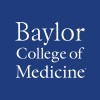
COVID-19 Infection and Multiple Myeloma
Multiple MyelomaCovid191 moreCollect in an observational study the outcomes of COVID19 infection in MM patients across Europe.

Dipyridamole to Prevent Coronavirus Exacerbation of Respiratory Status (DICER) in COVID-19
COVIDCorona Virus Infection2 moreThe most severe manifestations of COVID-19 include respiratory failure, coagulation problems, and death. Inflammation and blood clotting are believed to play an important role in these manifestations. Research in humans has shown that dipyridamole can reduce blood clotting. This research study is being conducted to learn whether 14 days of treatment with dipyridamole will reduce excessive blood clotting in COVID-19. This study will enroll participants with confirmed coronavirus (SARS-CoV)-2 infection that are admitted. Eligible participants will be randomized to receive dipyridamole or placebo for 14 days in the hospital. In addition, data will be collected from the medical record, and there will also be blood draws during the hospitalization.

Project STARFISH - PRJ0002679
SARS-CoV-2 InfectionInfluenza A2 moreThis is a non-interventional study to perform the clinical performance evaluation of the Starfish Test using prospectively collected matched nasopharyngeal and nasal swab samples from the same donor. In order to meet the minimum sample requirements, and to demonstrate performance on a range of viral strains, the prospective collection may be supplemented with banked remnant nasal and/or nasopharyngeal samples.

Assessment of Long-term Sequelae of Coronavirus Disease 2019 (COVID-19) Pneumonia With Chest CT...
COVID-19 PneumoniaSequelae of; Infection3 moreThe goal of this prospective multicentric study is to evaluate the presence of long-term pulmonary sequelae in patients who had required hospitalization for treating COVID-19 pneumonia, trough chest CT and pulmonary function tests (PFT). Secondly we would like to evaluate the possible correlation between the chest CT findings and pulmonary function tests pre-existing co-morbidities and type of therapy used during hospitalization.

Diagnostic Utility of Otosight Middle Ear Scope
Ear InfectionMiddle Ear Infection1 moreEvaluate clinic workflow impact of OtoSight use for patients seen in the pediatric otolaryngology clinic.

Treatment of Initial Clostridium Difficile Infection
Clostridium Difficile InfectionInvestigators designed an open, two-arm study to compare oral vancomycin with a fecal microbiota transplant (FMT) from a fecal donor-unrelated donor mix (FURM) as treatments for the first Clostridium difficile infection (CDI) episode among hospitalized patients.

Kinetics of HIV-RNA Decay in Seminal Plasma of Men Treated by Dolutegravir at the Time of Primary...
HIV Infection PrimarySponsor: IMEA - Fondation Internationale Léon Mba C.H.U. Bichat - Claude Bernard 46, Rue Henri Huchard - 75018 PARIS Tél. : 01.40. 25. 63. 65 - Fax : 01.40.25.63.56 Coordinating investigator: Dr Caroline Lascoux Combe Hôpital Saint Louis Service Maladies Infectieuses 1 avenue Claude Vellefaux - 75010 PARIS Tél. : 01 42 49 49 73 - Fax : 01 42 49 47 43 E-mail : caroline.lascoux-combe@aphp.fr Participating country : FRANCE Primary objective : Comparing the kinetic of HIV-RNA decay in blood plasma and in seminal plasma in patients starting a triple combination regimen with dolutegravir + tenofovir DF (TDF) + emtricitabine (FTC) at the time of PHI. Secondary objectives : Comparison of HIV-1 RNA level in plasma (threshold 20 and 1 copies/ml) and in seminal plasma (threshold 60 copies/ml) at each visit D0, W2, W4, W8, W12, W24, W36, W48 To assess the frequency of intermittent shedding in seminal plasma once virological suppression has been achieved and until W48 Evolution of cellular HIV-1 DNA level in PBMC and in non-sperm cells between D0 and W48 Comparison of dolutegravir concentration in blood plasma and seminal plasma Study of risk factors associated with viral persistence of HIV-RNA in the seminal plasma Analysis by deep sequencing of the viral population (quasi-species) in both compartments (blood plasma and seminal plasma) before virological suppression has been achieved (i.e. at D0 and W12) Inclusion criteria : Patients diagnosed at the time of primary HIV infection (PHI) (i) a negative or indeterminate HIV ELISA associated with a positive antigenemia or plasma HIV RNA, (ii) a western blot profile compatible with ongoing seroconversion (incomplete western blot with absence of antibodies to pol proteins (p34, p68)) or (iii) an initially negative test for HIV antibodies followed within 3 months by a positive HIV serology Treatment including dolutegravir (DTG 50mg) + tenofovir/emtricitabine (TDF/FTC 245 mg/200 mg) initiated by the referee physician within a maximum of 15 days after diagnosis of PHI Genotypic sensitivity to TDF, FTC and DTG Patient with medical care insurance Exclusion criteria : Chronic infection Infection or co-infection with HIV-2 Study treatment : Dolutegravir and tenofovir/emtricitabine Number of subjets : 20 patients (exploratory study)

QoL and Adherence to One-pill Once-a-day HAART
HIV InfectionHIV InfectionsPrimary objective of the study is: To verify if simplification of the antiretroviral regimen, measured as the reduction of pill burden alone, may affect adherence rate of patients.

TR-701 FA vs. Linezolid for the Treatment of Acute Bacterial Skin and Skin Structure Infections....
Skin and Subcutaneous Tissue Bacterial InfectionsThis is a randomized, double-blind, double dummy, multicenter Phase 3 study of oral TR-701 FA 200 mg once daily for 6 days versus oral Zyvox® (linezolid) 600 mg every 12 hours for 10 days for the treatment of ABSSSI in adults. Approximately 75 to 100 sites globally will participate in this study. Patients with an ABSSSI caused by suspected or documented gram positive pathogen(s) at baseline will be randomized 1:1 to study treatment

Complicated Skin and Skin Structure Infections
Skin InfectionAbscess1 moreThe purpose of this study is to demonstrate the non-inferiority of meropenem (Merrem) and imipenem in hospitalised subjects with complicated skin and skin structure infections.
